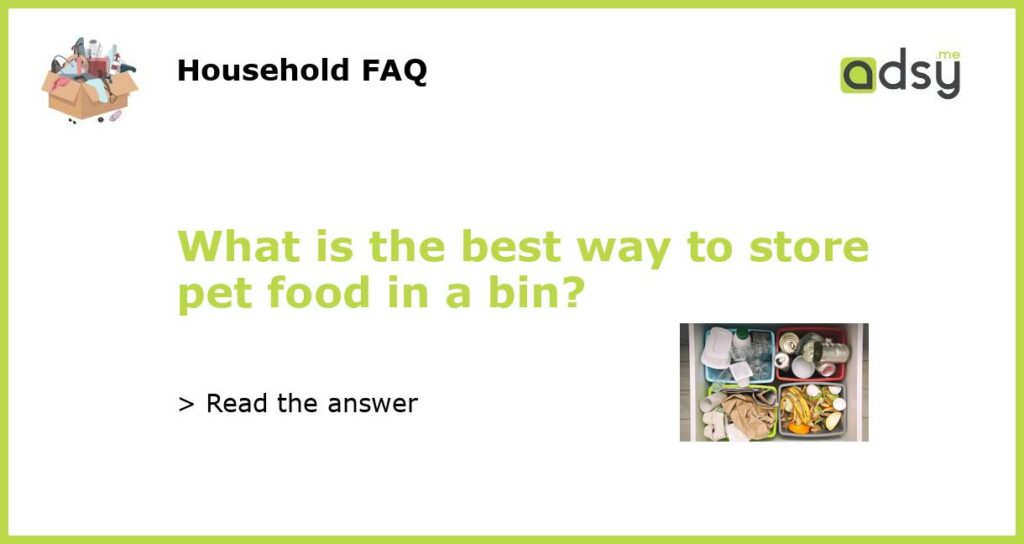Proper Storage of Pet Food is Essential for Freshness and Safety
Many pet owners wonder about the best way to store their furry friends’ food to ensure its freshness and safety. Storing pet food correctly is essential to keep it free from contamination, maintain its nutritional quality, and prevent foodborne illnesses. The most effective storage method is to use a sturdy, airtight container specifically designed for pet food storage. Here are some key factors to consider to properly store pet food in a bin:
Choose a Storage Container Made for Pet Food
Using a container specifically designed for pet food storage is crucial. These containers are typically made from durable, pet-safe materials like plastic or metal and come with airtight seals to keep out moisture, pests, and odors. Look for containers that are BPA-free and easy to clean, as this will help maintain the freshness and quality of the pet food over time.
Optimal Location for Storage Bin
The location of the storage bin is also important. Select a cool, dry area in your home away from direct sunlight. Excessive heat and sunlight can accelerate the degradation of the pet food, reducing its nutritional value and potentially causing the food to spoil more quickly. A dry environment helps prevent the growth of mold and bacteria, ensuring the safety of the food your furry friend consumes.
Keep Pet Food Sealed and Airtight
Once you have chosen a suitable container and location, it is vital to keep the pet food properly sealed and airtight. This helps prevent the food from being exposed to air, which can lead to oxidation and loss of nutritional value. Additionally, an airtight seal prevents pests, such as ants and insects, from accessing the pet food and helps to retain its aroma and flavor.
Manage the Storage Environment
In addition to proper container selection, it is essential to manage the storage environment to further maintain the freshness of the pet food. This includes ensuring that the bin is cleaned regularly to remove any residues or contaminants that could contaminate the new pet food. It is also recommended to store the pet food in its original packaging when transferring it to the storage bin. The original packaging often includes important information such as the expiration date and batch number, which can be useful for monitoring the quality and safety of the food.
Rotation and Monitoring
Lastly, pet owners should establish a system for rotating and monitoring their pet food supply. This involves using the oldest food first and regularly checking for any signs of spoilage or pests. By regularly inspecting the stored food, pet owners can quickly identify any issues and prevent their pets from consuming potentially harmful or degraded food. It is also important to remember that pet food, like any other perishable product, has a limited shelf life. Be sure to check the manufacturer’s guidelines for recommended storage durations and follow them accordingly to ensure the safety and freshness of your pet’s food.






